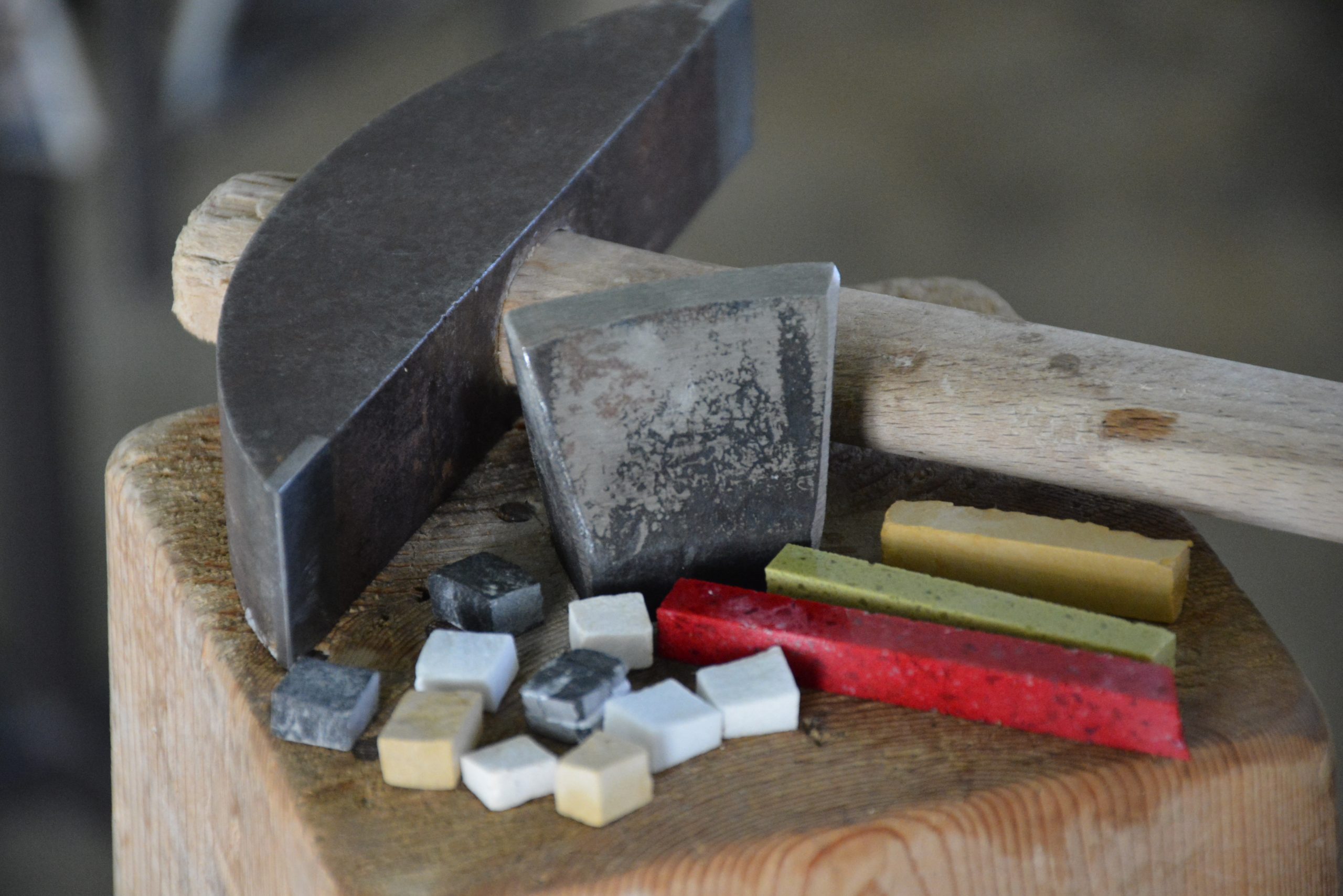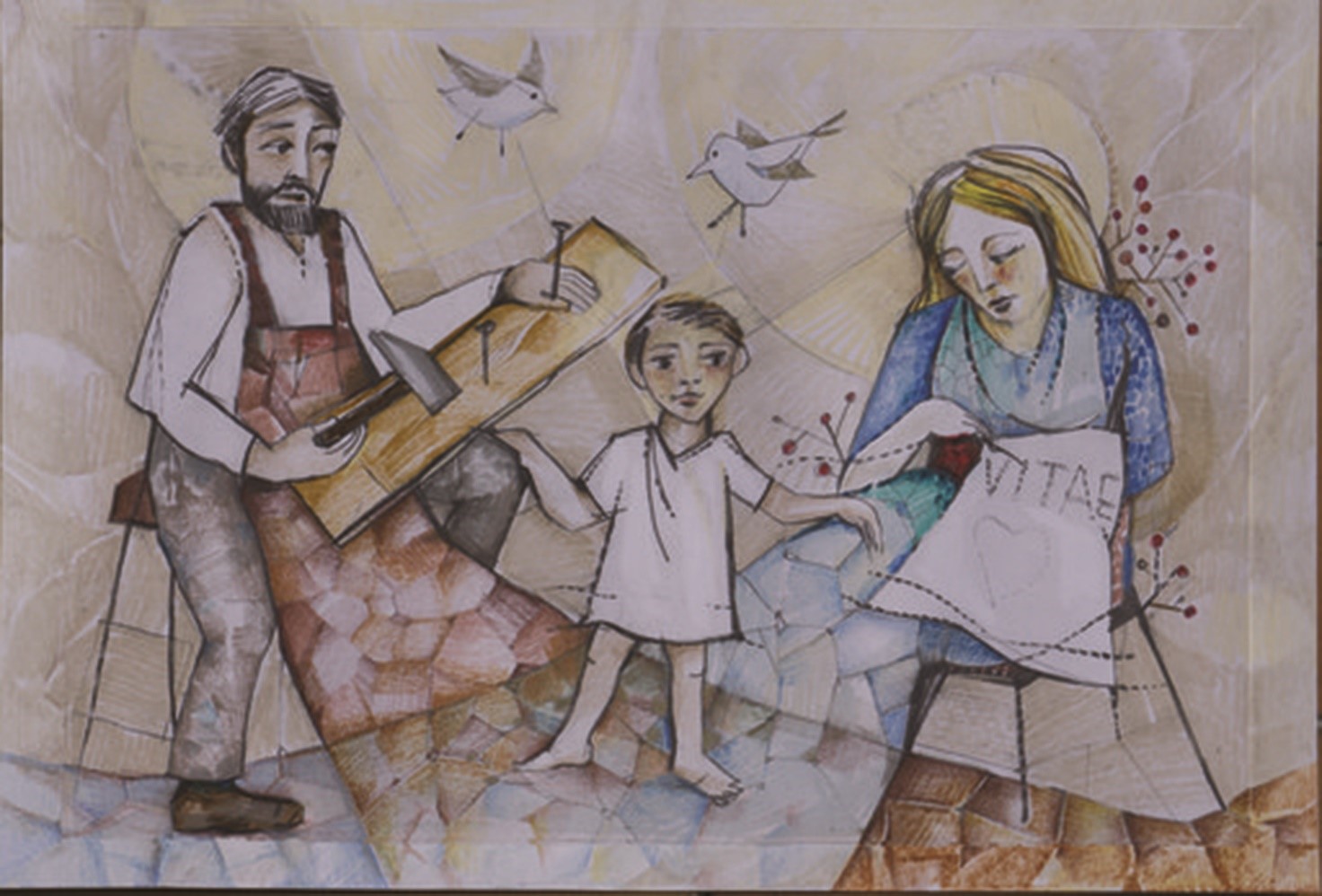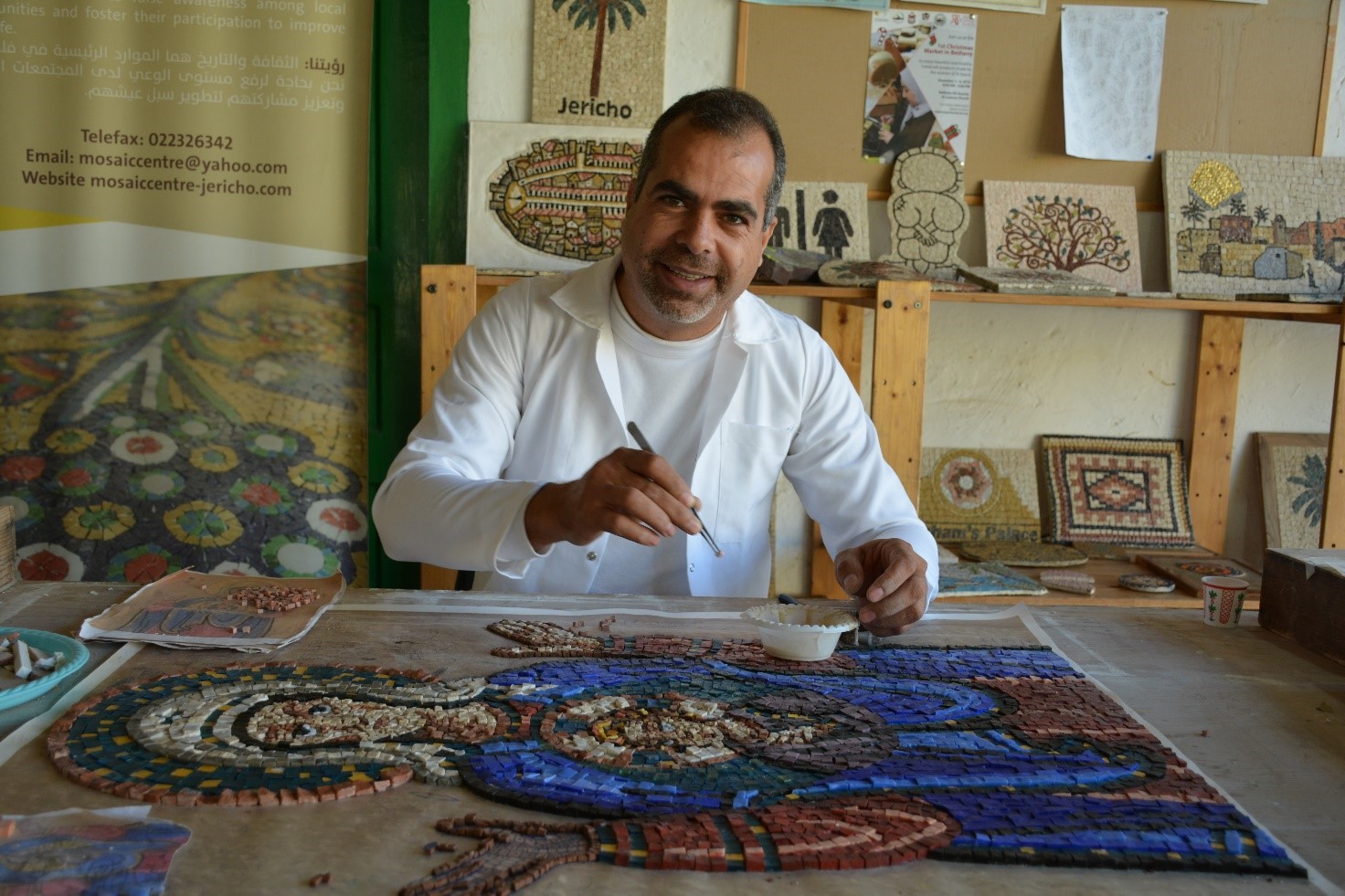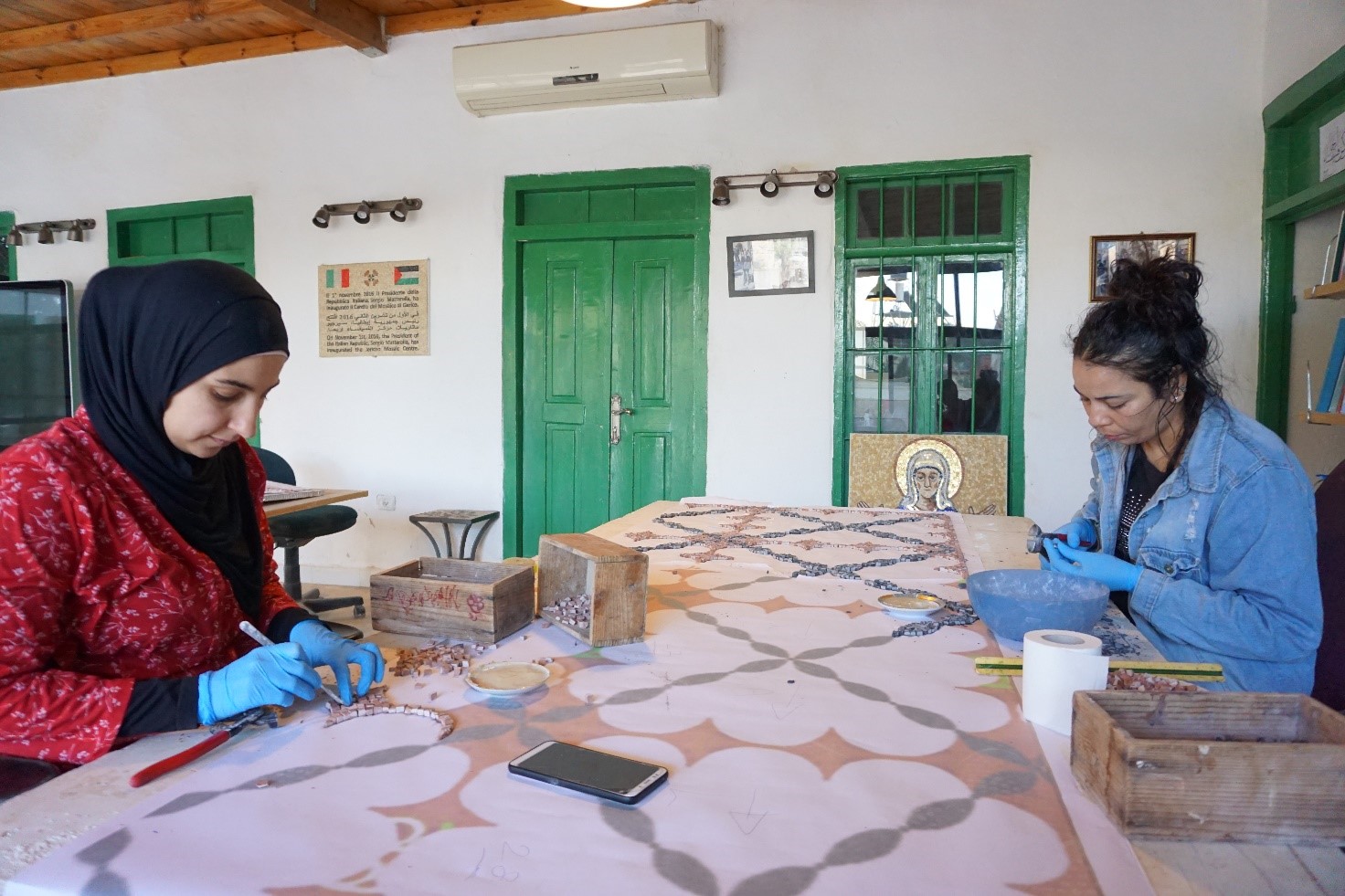MOSAIC PRODUCTION
Copies inspired by ancient mosaics and new art works are produced in our workshops, blending traditional skills and modern creativity, using hand-cut stones, glass or ceramic tesserae.
The tools used for cutting mosaic tesserae are the mosaic hammer and the hardie. These tools are used to cut large slabs of stone into tesserae. Stone slabs should be held in a horizontal position during the cutting process, which involves giving the material a short, sharp blow to obtain tesserae of the desired size. To cut smalti or glass tesserae of the desired shape, we use tile nibblers.
Sketching a Design onto a Piece of Paper
To make a perfect copy of an ancient mosaic, a sheet of tracing paper is placed directly onto the mosaic so that the exact outlines of each tessera and interstice may be marked with a pen. An easier technique requires a color reproduction of the mosaic, in which the tesserae are clearly visible. A design may also reinterpret a classical motif, or be an original creation. Transposing a painting into a mosaic is more complex. It needs great sensitivity on the part of the mosaicist, to harmonized the distribution of the tesserae.
The direct technique is used when the work is composed directly on the base. The tesserae are glued to this surface with a binder following the drawing. The application of the mosaic takes place by placing each tessera on the preparation of binder from the side of the base, which therefore remains incorporated in the layer of adhesive. Errors in the laying of tesserae cannot be easily adjusted once the binder has set. Using this method, the mosaicist can view and judge in advance the final effect of the work.
The indirect method consists of placing tesserae face down onto a temporary base, fixing the tesserae with water soluble glue on the design brought back on a sheet of paper or cloth. The application of the mosaic thus composed takes place by placing the face of the mosaic on the preparation of the binder. Only the reverse side of the mosaic is on view during the work. Once dry, the sheet of paper or cloth is removed from the surface of the mosaic, completing the work with grouting and filling the joints.
Once the design has been prepared and the method decided, the tesserae begin to be placed on the outer lines of the main subject, adjusting each tessera according to the design. Then we begin to fill the space within the design. Once the main subject is finished, we start with the background, following the line of the tesserae of the main subject going outwards.





